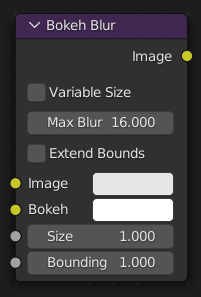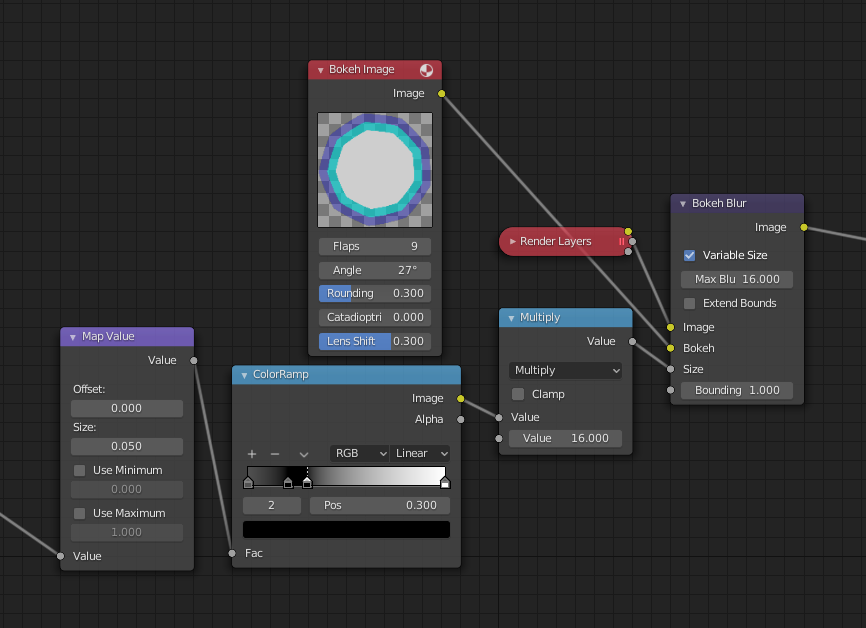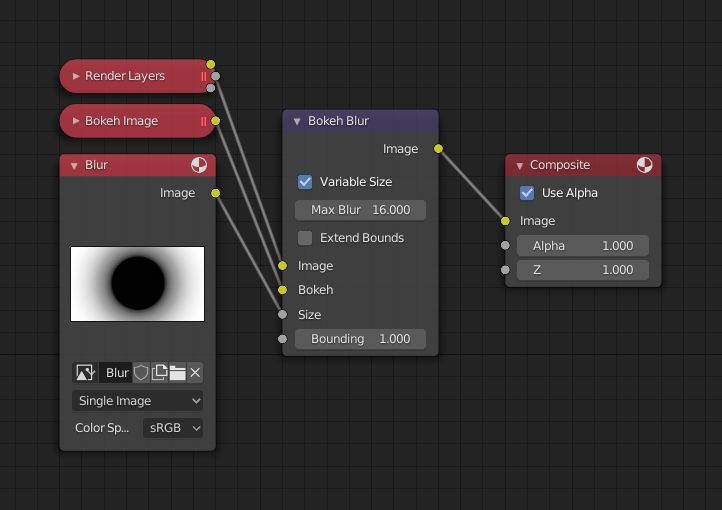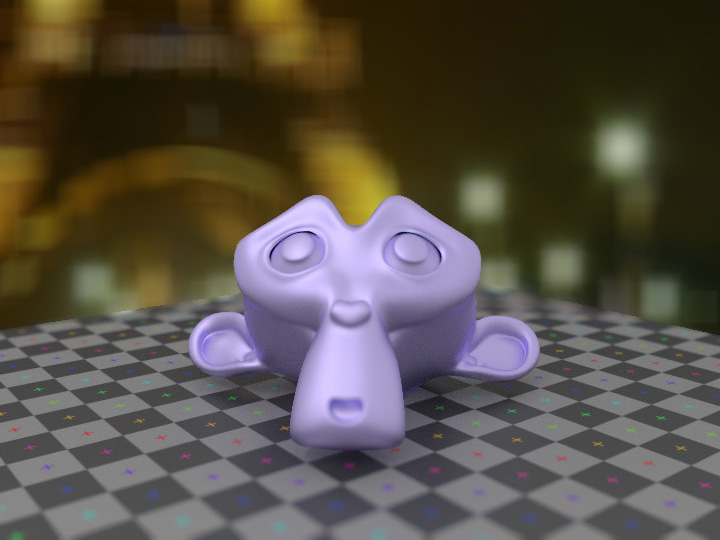散景模糊节点

散景模糊节点生成一个和散焦相似的散景类型模糊。不像散焦是在合成中对精确区域进行的处理,此节点可以通过应用 散景图 节点产生更多复杂的效果。
在支持OpenCL的情况下,计算区域的限定和遮罩可以进行一些执行优化。
输入
- 图像
标准颜色输入。
- 散景(Bokeh)
只是供 散景图 节点的输入连接端口。
- 尺寸
模糊量的尺寸限制。尺寸可以由整个图像上用单一数值或可以控制的可变值来确定。为了以后便于使用,可变值必须被勾选。关于此节点如何使用的更多范例请参看如下部分。
- 边界框
This can be used with a Box Mask matte node or with a Mask input node to restrict the area of the image the blur is applied to. This could be helpful, for example, when developing a node system by allowing only a small area of the image to be filtered thus saving composite time each time adjustments are made.
属性
- 变量大小
对输入图像使用可变模糊半径。
- 最大模糊
"最大模糊度" 旨在通过限制计算模糊的像素数来充当优化工具。
输出
- 图像
标准颜色输出。
示例
下面是输入图像尺寸如何在实际工作中使用的三个范例。
An ID masked alpha image can be used so that a background is blurred while foreground objects remain in focus. To prevent strange edges the Dilate Node should be used.
The Z pass can be visualized using a Map Value node and a Color Ramp node as described in Render Layers. A multiply Math node can be used following the color ramp so that a blur value greater than one is used for objects outside the focal range.

使用Z通道。
A manually created grayscale image can be used to define the sharp and blurry areas of a preexisting image. Again, a Multiply Node can be used so that a blur value greater than one is used.

应用此节点后效果。

使用Z通道。 |

应用此节点后效果。 |